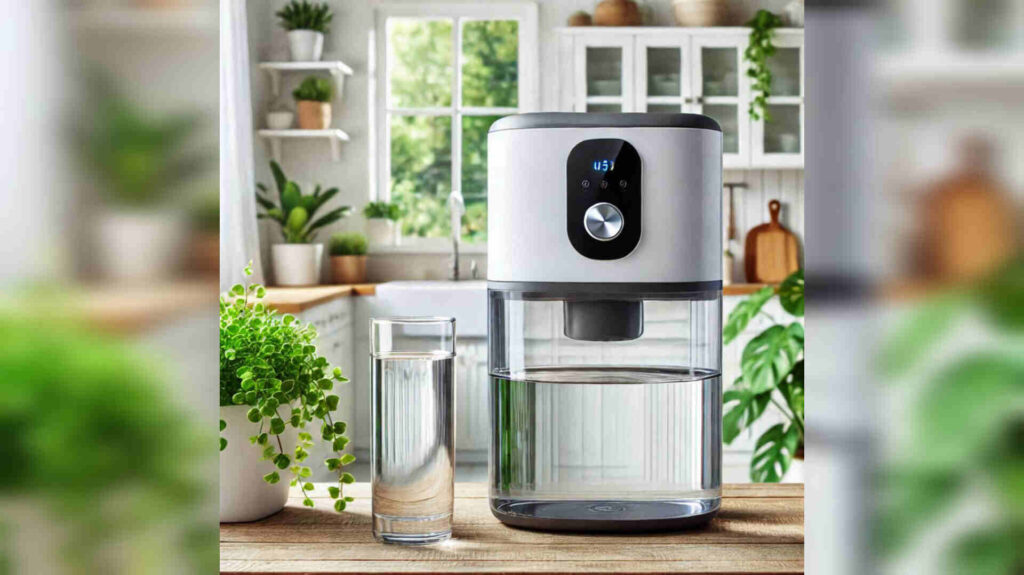Clean and safe drinking water is essential for maintaining good health. With increasing pollution and contaminants in water sources, a reliable water purifier has become a necessity in every household. But with so many options available, how do you choose the best one for your needs? This guide will walk you through everything you need to know about water purifiers and how to select the perfect fit for your home.
Why Do You Need a Water Purifier?
Access to clean water is vital for your health and well-being. Unfortunately, tap water often contains impurities like chlorine, heavy metals, bacteria, viruses, and harmful chemicals. These contaminants can lead to various health problems, including gastrointestinal infections, kidney issues, and long-term exposure risks.
A water purifier helps eliminate these impurities, providing safe, great-tasting water for your family. It also reduces the need for bottled water, which is both expensive and harmful to the environment.

Buy Now: https://amzn.to/3BKJD6q
How Water Purifiers Work
Understanding the working mechanism of water purifiers can help you make an informed decision:
- Filtration Mechanisms: Filters trap sediments, dirt, and microorganisms. Some models include advanced filtration stages like ultrafiltration (UF).
- Role of Membranes and UV Technology: RO membranes remove dissolved contaminants, while UV lamps deactivate pathogens, ensuring safe drinking water.
Types of Water Purifiers and Their Benefits
When selecting a water purifier, understanding the types available is crucial. Here’s a breakdown of the most popular options:
1. Reverse Osmosis (RO) Water Purifiers
RO water purifiers use a semipermeable membrane to filter out dissolved solids, heavy metals, and microorganisms.
Benefits:
- Ideal for areas with hard water or high TDS (Total Dissolved Solids).
- Removes up to 99% of impurities.
2. Ultraviolet (UV) Water Purifiers
UV purifiers use ultraviolet light to kill bacteria and viruses present in the water.
Benefits:
- Effective against microbial contamination.
- Retains essential minerals in water.
3. Ultrafiltration (UF) Water Purifiers
UF purifiers use membranes with larger pores than RO but smaller than traditional filters to remove suspended particles and pathogens.
Benefits:
- Works without electricity.
- Ideal for low TDS water.
4. Activated Carbon Filters
These purifiers use activated carbon to remove chlorine, bad odors, and organic impurities.
Benefits:
- Enhances water taste.
- Affordable and simple to maintain.
5. Gravity-Based Water Purifiers
Gravity-based purifiers rely on gravitational force to filter water through activated carbon and sediment filters.
Benefits:
- Economical and portable.
- No electricity required.
Factors to Consider When Choosing a Water Purifier
Selecting the right purifier depends on various factors. Here’s what you should evaluate:
1. Water Quality in Your Area
- Check the TDS level of your water. High TDS water may require an RO purifier.
- Determine if microbial contamination is an issue, necessitating a UV or UF purifier.
2. Storage Capacity
- A larger family may need a purifier with a higher storage capacity to ensure a constant supply of clean water.
3. Maintenance and Filter Replacement
- Choose a purifier with easily accessible and affordable filters. Regular maintenance is essential for effective purification.
4. Energy Efficiency
- Consider the energy consumption of electric purifiers, especially RO and UV models.
5. Budget
- While advanced purifiers offer more features, they can be expensive. Choose a purifier that balances cost and functionality.
Factors to Consider Before Buying
Before purchasing a water purifier, evaluate these factors:
- Water Source Type: Analyze your water’s TDS level and contamination type.
- Family Size and Usage Needs: Larger families require purifiers with higher storage and filtration capacities.
- Budget and Long-Term Costs: Consider both the initial investment and recurring maintenance expenses.
Top Tips for Maintaining Your Water Purifier
Proper maintenance ensures your water purifier operates efficiently and has a long lifespan. Here’s how to keep it in top condition:
Replace Filters Regularly: Follow the manufacturer’s guidelines for filter replacement.
Clean Storage Tanks: Periodically clean the storage tank to prevent algae or bacteria buildup.
Check for Leaks: Inspect the purifier for leaks and fix them promptly.
Service Periodically: Schedule professional servicing at least once a year.
The Environmental Impact of Water Purifiers
Using a water purifier is an environmentally conscious choice. It reduces dependence on single-use plastic bottles, helping to minimize plastic waste. However, some purifiers, like RO models, produce wastewater during the purification process. To offset this, consider repurposing the reject water for cleaning or gardening.
Future Trends in Water Purification
The water purification industry is evolving with new innovations:
- Smart Water Purifiers: Internet-enabled devices offer real-time monitoring and automated maintenance alerts.
- Technological Innovations: Advanced filtration techniques and energy-efficient designs are shaping the future.
Conclusion
Investing in a water purifier is a crucial step toward ensuring your family’s health and well-being. By understanding the types of purifiers, evaluating your needs, and maintaining the device properly, you can enjoy clean and safe drinking water every day.
Whether you choose an RO system for high TDS water or a simple gravity-based purifier for portability, there’s a solution for every household. Make the smart choice today and prioritize your family’s health with the right water purifier!



